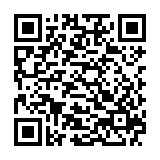They say, ‘when in Rome, do as the Romans do.’ But when it comes to business, it’s easier said than done when you’re speaking to a multilingual audience. In our globalized world, what IS the best way to speak to your audience to ensure your message resonates with as many attendees as possible?
The truth is that multilingual audiences present a unique challenge. But with the help of an experienced team of interpreters and some essential tips, you CAN nail it. Here’s how:
Tips for Speaking to a Multilingual Audience
Keep Your Language Simple
The most effective speakers use ‘plain language’ as far as possible when they address limited English proficiency (LEP) audiences. Someone that doesn’t speak English as their first language is much more likely to understand the word ‘many’ than the word ‘plethora.’ You also want to keep the language as simple as possible so the interpreter can get your message across without any confusion.
Practice the Pause. Frequently.
When speaking to a multilingual audience, it’s essential to pause frequently. This allows the interpreter to do their job and gives your idea some time to sink in with the audience. It also gives you a bit of time to prepare your next statement while the audience absorbs what you just said. Practical pause indicators include varying topics, before punchlines, and after punchlines. You can also pause before a reveal, and alongside body language signals.
Summarize Your Sections
Without summaries, it’s easy for your audience to miss the entire purpose of the event. Speakers that regularly summarize critical sections of their presentation avoid having their audience members leave with conflicting outcomes.
Bring the Presentation to Life
Telling stories of personal experiences and using images to enhance your point works across all languages and cultures and can really breathe life into your subject. If there’s a short anecdote relevant to your topic, go ahead and use it as an opening story. Try to use local or topical angles for your anecdote, too, so the audience knows you’ve tailored your talk just for them.
Impress Right Away
Your audience will form their overall impression of you and the message you’re trying to convey within the first minute or two of your presentation. Instead of the standard introductions, try using something catchy to make an impact right from the start. Questions that make the audience think or respond work wonders. So do stories that are relevant to your topic or angle.
Don’t Leave Interpreting to Chance
A professional interpreter should be seen as a specialist event planner if you’re targeting multilingual audiences. Interpreting and translation are foundational parts of event delivery. Interpretation shouldn’t be considered a dispensable service. It’s an investment with many advantages. And it’s the key to a successful multilingual event. Even if you can speak more than one language, this is a job best left to the professionals. A professional interpreting agency will help you determine which languages you need to cover. They also determine what specific style of interpreting is most suitable for your event.
Day Interpreting can help you along this process. From selecting the right interpreter to ensuring that your event is as diligently planned as possible, we’re here to help you overcome the language barrier.
Get in touch with us today to learn more about our range of interpretation services and how we can get your voice heard on the global stage!





0 Comments